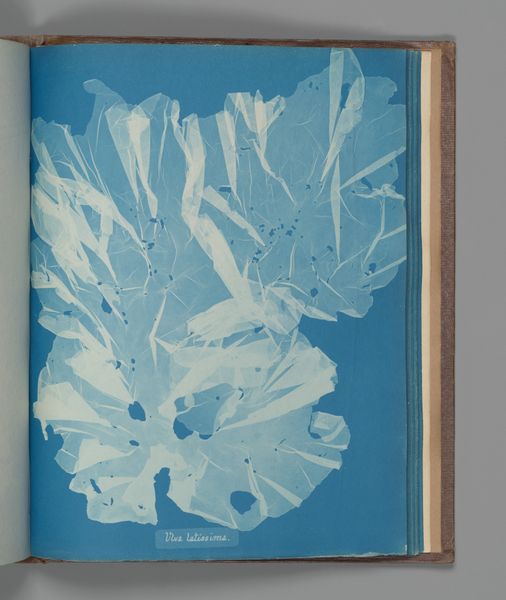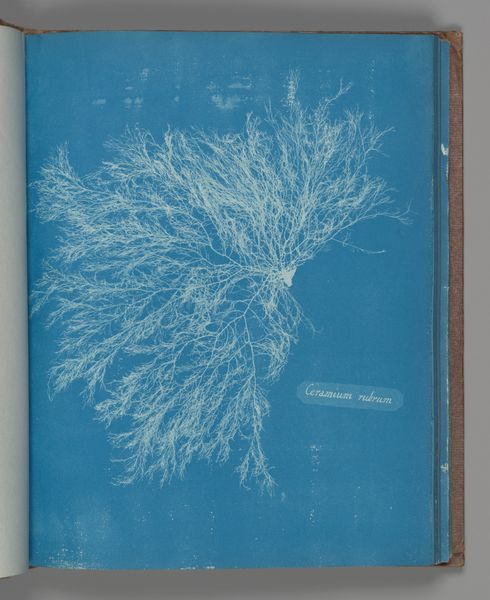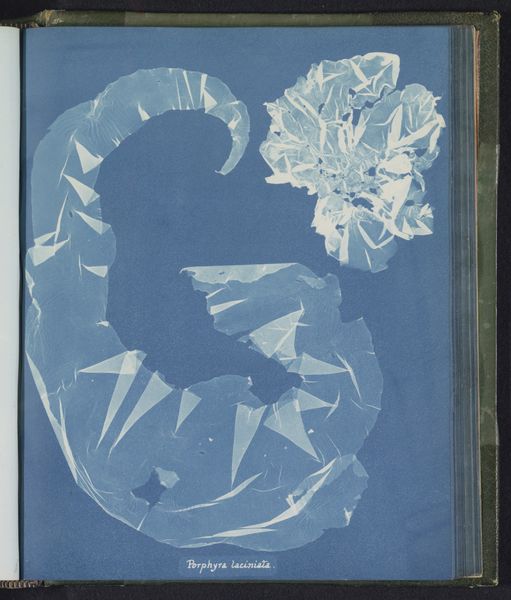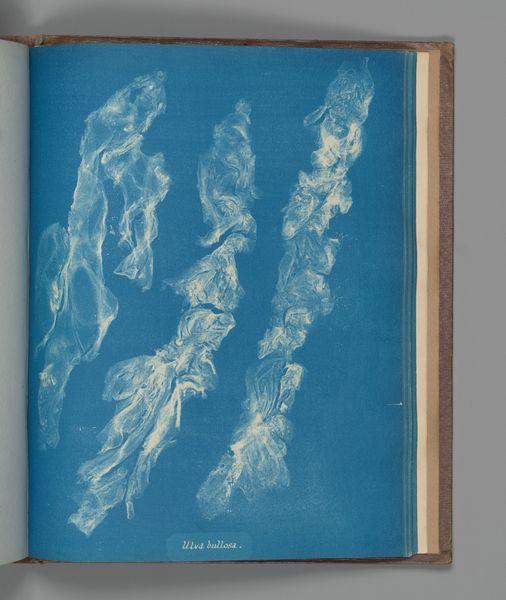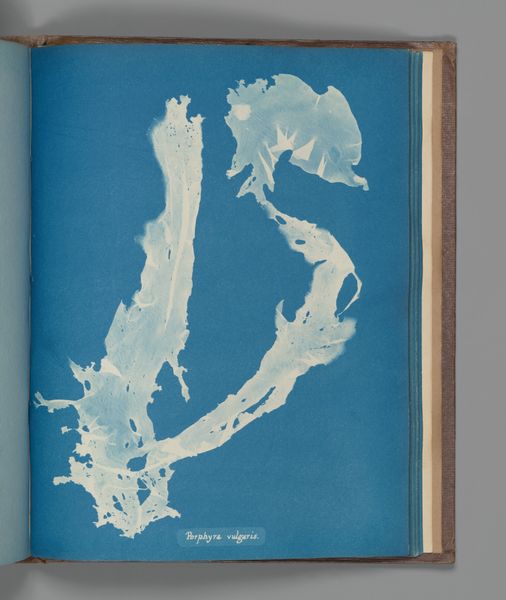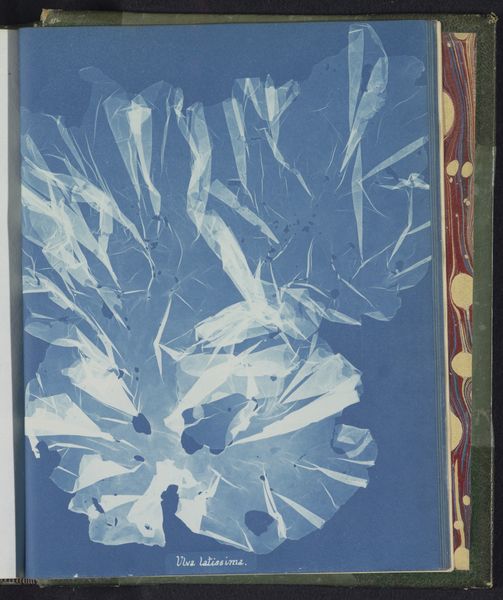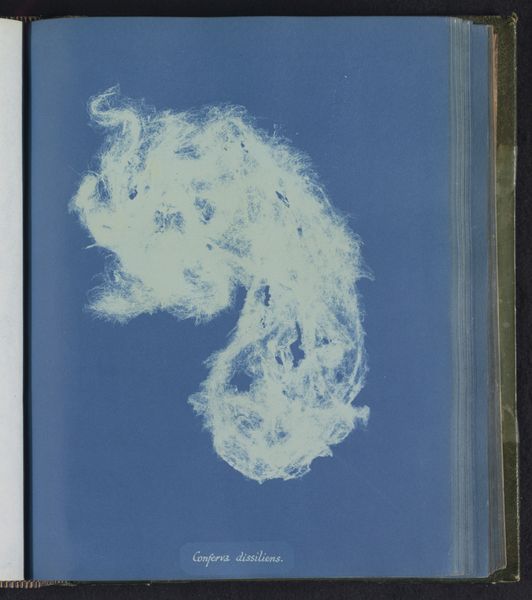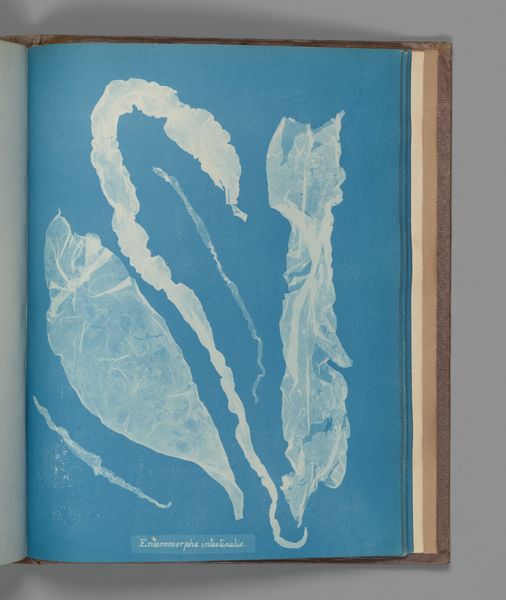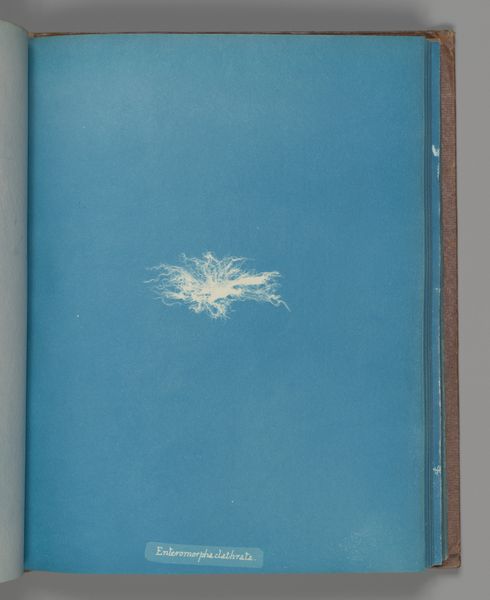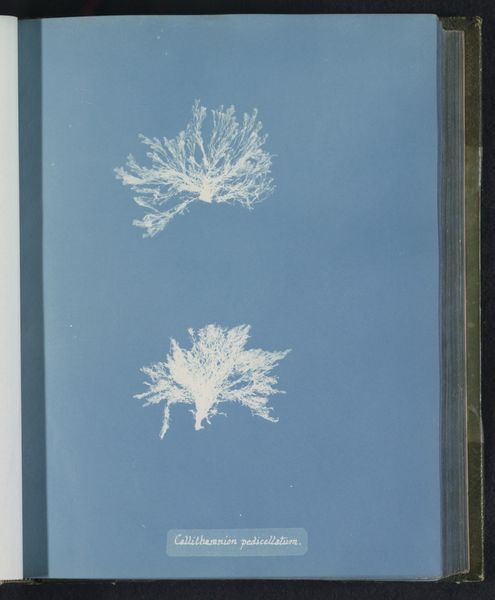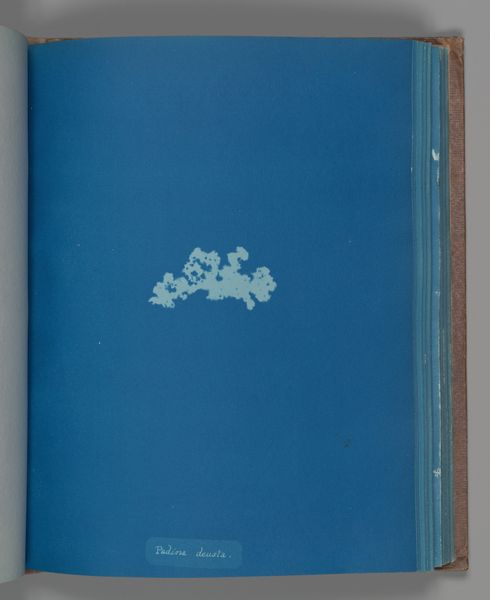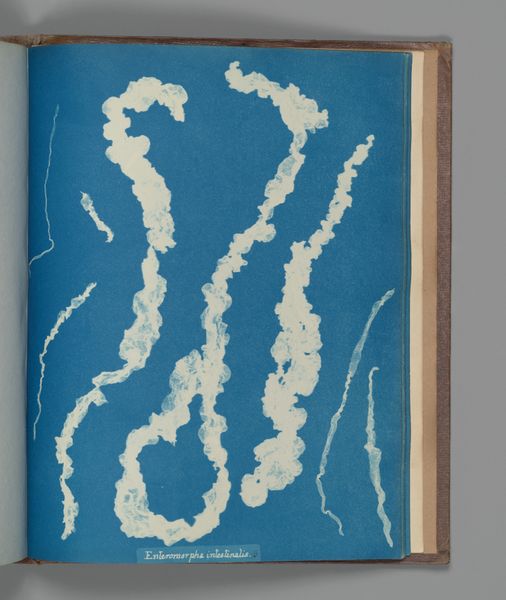
print, cyanotype, photography
# print
#
cyanotype
#
photography
Dimensions: Image: 25.3 x 20 cm (9 15/16 x 7 7/8 in.)
Copyright: Public Domain
Anna Atkins made this cyanotype titled "Zygnema deciminum." In the early 19th century, photography was emerging as both a scientific tool and a medium for artistic expression. Atkins, a British botanist, utilized the cyanotype process to create detailed records of plant life. This photogram, made by placing algae directly on light-sensitive paper, reflects the Victorian era's fascination with natural history and scientific documentation. The image creates meaning through its stark contrast and detailed depiction of the algae's structure. The cyanotype process, invented by Sir John Herschel, was quickly adopted by scientists for its ease of use and precision. Atkins's work exists at the intersection of art and science. It questions traditional gender roles in science, as women were often excluded from formal scientific institutions. The historian can look at scientific publications, letters, and other period documents to better understand the social and institutional context of this image. Such resources help us understand it as more than just a pretty picture, but as a product of social, scientific, and artistic histories.
Comments
No comments
Be the first to comment and join the conversation on the ultimate creative platform.
